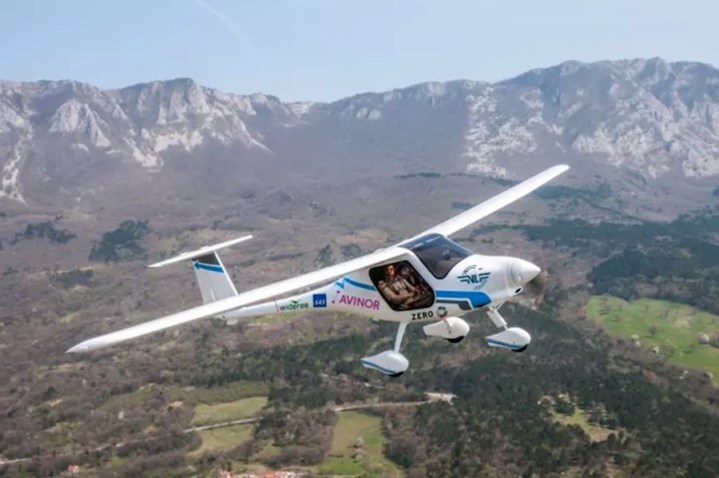
While a growing number of outfits are developing electric-powered vertical takeoff and landing aircraft, the plan to use them for taxi-like services in urban areas means it may be some time before we see the machines appear in a commercial setting.
In the meantime, several companies are working to incorporate battery technology into regular-looking airplanes for greener, quieter, and more efficient flights.
With a view to launching a commercial service using electric planes within seven years — and electrifying the entirety of its local air transport by 2040 — Norway this week witnessed its first-ever electric-powered flight in an Alpha Electro G2 plane, built by Slovenian company Pipistrel, Reuters reported.
The flight was piloted by Norwegian transport minister Ketil Solvik-Olsen and also had on board Dag Falk-Petersen, head of state-run Avinor, which operates most of the country’s airports.
As planned, the flight lasted just a few minutes, taking the pair around Oslo airport before landing safely.
Solvik-Olsen said the demonstration flight was proof that a commercial service using electric-powered planes “is not a far-off vision of the future but a reality achievable within a few years.”
The nation is seen as an ideal place for short-hop services using electric aircraft as it has a large number of remote islands, as well as fjords that could be crossed at speed.
“Electric aircraft are set to significantly improve the environmental consequences of the aviation industry,” Falk-Petersen said in a release. “It could also be cheaper to fly as operating costs for several aircraft models will be considerably lowered, which will have an impact on ticket prices.”
According to Pipistrel, its two-seat Alpha Electro motor has around 50 kilowatts of power and a battery of 21kWh, enough to keep the aircraft in the air for up to an hour. The range is currently about 80 miles (130 km). Without anyone on board, the Alpha Electro weighs 770 pounds (350 kg) but can handle a maximum takeoff weight of 1212 pounds (550 kg).
Current challenges with electric-plane technology include the heavy weight of batteries and limited range, but these are expected to be conquered in the coming years.
Indeed, moving toward overcoming such predicaments, a number of other companies are developing hybrid-electric planes, among them Airbus, which is working with Siemens and Rolls-Royce to develop a larger passenger aircraft in a bid to transform the short-haul market. The E-Fan X program plans to use a 2-megawatt electric motor alongside three jet engines on a BAe 146 aircraft, with a second electric motor replacing another of the jet engines at a later date. With current battery technology, the plane is too big to be electric-only, though such a design is the ultimate goal.


